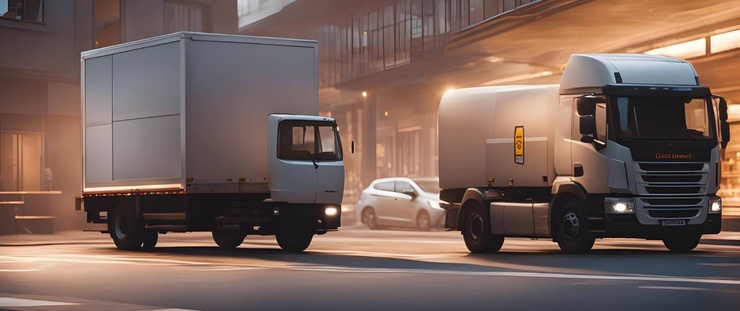- Logistics
Logistics market landscape
Table of Contents

Moving Things Around
You hear the word logistics often. “He will handle the logistics of the family vacation” or “logistics is the most important part of a military campaign.” Vacations, war zones - what is the difference? According to the Oxford dictionary, logistics is the detailed coordination of a complex operation involving many people, facilities, or supplies. Simply put, it is organizing the movement of people and things. For businesses, this is crucial.
Take the age-old, easy to understand example of a business operation - the lemonade stand. Suppliers, ingredients, prices, consumers, operations, sales forecasts, advertisements - you name it - are all a focus of the operation. Logistics is the glue that holds each of these pieces together. The business can still function if you remove a few of these but it cannot function if you remove the glue.
Businesses are people and things creating value for other people and things. If all of these people and things cannot move through time and space, value cannot be created. That’s why logistics is crucial.
Demand & Capacity
In an efficient market, the capacity of logistics modes (trucks, trains, ships, planes, etc.) and nodes (ports, warehouses, distribution centers, etc.) can sufficiently meet the demand of the goods flowing through them. Sometimes the demand for goods is greater than a supply chain’s capacity to move them. The most recent example is Covid-19. Nearly $10.4T of global stimulus unleashed a rebound in which consumers spent more on goods than normal, stretching global supply chains. Consumers shied away from spending on travel and eating out, and instead focused their dollars on physical goods, further adding pressure to supply chains. There are simply too many goods being produced and shipped for supply chains to handle.
The recent surge in demand is best captured in the Logistics Managers Index (LMI). Economic activity in the logistics industry has boomed since the beginning of 2020, reflecting strong demand for transportation and warehousing services.
This has all amounted to container ships around the globe anchoring outside of ports waiting to get in as ports do not have the capacity to process the surge in containers. Truck drivers, tired of waiting for available chassis at ports, have opted to spend their valuable time running routes that do not begin or end at a port. On top of this, it is estimated that the U.S has a driver shortage of around 80,000 drivers - a number that is even higher in Europe, at 400,000!
In a recent survey, third-party logistics (3PL) companies cite top challenges in 2021 as being capacity, growth management and labor management. The truth is, many logistics companies are not able to handle demand surges and dynamic markets. This leads to empty shelves, longer delivery times and unhappy shippers and end consumers. To be competitive, logistics companies must increase their supply chain adaptability and agility through investments in technology. Only 10% of 3PLs cite technology investments as being a challenge in 2021. There is an appetite for improvement.
Leading Logistics Companies
Logistics and 3PL companies around the world are ramping up technology investments to improve speed, visibility and adaptability. Investments typically focus on areas of the supply chain such as end-to-end visibility, artificial intelligence, machine learning and automation. DHL e-commerce features full tracking visibility from end-to-end across the supply chain, allowing the company and its customers to spot and react to supply chain disruptions in real time. Penske promotes its own ClearChain technology, enabling the company to optimize shipments, reduce miles, improve visibility and asset utilization for its customers. In China, Dada Group has launched a digital logistics program to improve providers’ delivery and management efficiency. Smiota delivers an innovative cloud-based logistics software, secure APIs, and smart locker systems that work together to power a customizable, end-to-end delivery solution.
Logistics is the glue that holds commerce together. Whether you’re a neighborhood lemonade stand or a global vaccine manufacturer, speed, visibility and adaptability are crucial to your logistics operations. Technology is here to help.

Komal Puri is a seasoned professional in the logistics and supply chain industry. As the AVP of Marketing and a subject matter expert at FarEye, she has been instrumental in shaping the industry narrative for the past decade. Her expertise and insights have earned her numerous awards and recognition. Komal’s writings reflect her deep understanding of the industry, offering valuable insights and thought leadership.
Let's Talk to Our Experts and Optimize Your Deliveries Today!
An expert from our team will reach out within 24 hours


